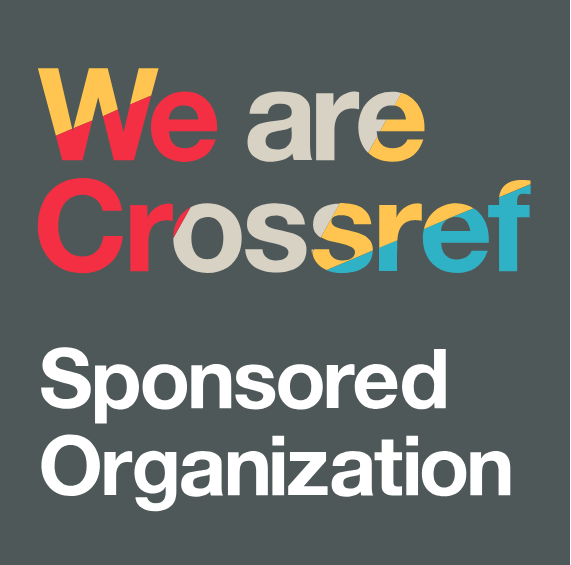Understanding Islamic Financial Technology Adoptin in Indonesia: The Integration of Utaut, Es-Qual, and Religiosity
DOI:
https://doi.org/10.38035/jafm.v5i3.580Keywords:
ESQUAL, Islamic Financial , Technology, Religiosity, UTAUT2Abstract
Indonesia has largest Muslim population in the world, holds immense potential to lead the global technology based financial service revolution. However, the current landscape presents limitated market share. Out of 330 licensed fintechs, only 28 adhere to Sharia economic principles. This study aimed to to provide a conceptual model and unravel the factors shaping Behavioral Intentions (BI) in the use of Islamic Fintech in Indonesia. Additionally, it sought to assess the mediating effects of BI on the relationship between UTAUT2, Religiosity, and Service Quality of Islamic fintech, impacting Use Behavior (UB). Questionnaires was administered from 539 respondents, forming the basis for primary data collection. Descriptive statistics were used for data analysis, while SEM PLS examined the relationships between variables. This study revealed that BI of Islamic fintech directly influenced by Performance Expectation (PE), Effort Expectation (EE), Social Influence (SI), Habit (HA), Religiosity (RE), and ESQUAL (ESQ), while Facilitating Conditions (FC), HA, and BI significantly affects UB. A pivotal finding was the identification of BI as a mediator in the relationship between RE and ESQ, influencing subsequent UB. These results contribute significantly to the existing knowledge base, offering valuable insights to enhance the performance of Islamic fintech in Indonesia. The proposed factor model not only provides a framework for influencing behavioral intention within the sector but also suggests improvements to operational efficiency and effectiveness. This study is poised to make substantial contributions to the managerial and policy frameworks of Islamic fintech firms, fostering a more robust and responsive industry in Indonesia.
References
Ahmed, Z. et al. (2023) Partial Least Squares Path Modelling. 2nd Editio, Partial Least Squares Path
Modeling. 2nd Editio. Edited by H. Latan, J. Joseph F. Hair, and R. Noonan. Springer International Publishing. Available at: https://doi.org/10.1007/978-3-031-37772-3.
Alharbi, R.K., Yahya, S. Bin and Kassim, S. (2022) ‘Impact of religiosity and branding on SMEs
performance: does financial literacy play a role?’, Journal of Islamic Marketing, 13(12), pp. 2717–2741. Available at: https://doi.org/10.1108/JIMA-08-2019-0162.
Alsaghir, M. (2023) ‘Digital risks and Islamic FinTech: a road map to social justice and financial
inclusion’, Journal of Islamic Accounting and Business Research [Preprint]. Available at: https://doi.org/10.1108/JIABR-10-2022-0262.
Amelia, R. and Wibowo, D. (2020) ‘Analysis of Public Interest in Sharia Investing Through Financial
Technology Companies’, 151(Icmae), pp. 388–392. Available at: https://doi.org/10.2991/aebmr.k.200915.089.
Ammana (2018) Ammana Fintech Syariah Pertama yang Dapat Izin dari OJK - Tirto.ID. Available at:
https://ammana.id/news/post/ammana-raih-izin-usaha-fintech-syariah-pertama-dari-ojk (Accessed: 12 April 2020).
Ayedh, A.M. et al. (2019) ‘The integration of Shariah compliance in information system of Islamic
financial institutions: Qualitative evidence of Malaysia’, Qualitative Research in Financial Markets, 13(1), pp. 37–49. Available at: https://doi.org/10.1108/QRFM-05-2017-0042.
Bananuka, J. et al. (2019) ‘Determinants of the intention to adopt Islamic banking in a non-Islamic
developing country: The case of Uganda’, ISRA International Journal of Islamic Finance, 11(2), pp. 166–186. Available at: https://doi.org/10.1108/IJIF-04-2018-0040.
Banna, H. et al. (2022) ‘Islamic banking stability amidst the COVID-19 pandemic: the role of digital
financial inclusion’, International Journal of Islamic and Middle Eastern Finance and Management, 15(2), pp. 310–330. Available at: https://doi.org/10.1108/IMEFM-08-2020-0389.
Banna, H., Kabir Hassan, M. and Rashid, M. (2021) ‘Fintech-based financial inclusion and bank risk-
taking: Evidence from OIC countries’, Journal of International Financial Markets, Institutions and Money, 75, p. 101447. Available at: https://doi.org/10.1016/J.INTFIN.2021.101447.
Ben Salem, A. and Ben Abdelkader, I. (2023) ‘Diversification and performance of microfinance
institutions: does Islamic microfinance model matter?’, International Journal of Islamic and Middle Eastern Finance and Management, 16(5), pp. 975–995. Available at: https://doi.org/10.1108/IMEFM-01-2022-0031.
Chen, M.A., Wu, Q. and Yang, B. (2019) ‘How Valuable Is FinTech Innovation?’, Review of Financial
Studies, 32(5), pp. 2062–2106. Available at: https://doi.org/10.1093/rfs/hhy130.
Chin, W.W. (1998) ‘The partial least squares approach for structural equation modeling’, in G.A.
Marcoulides (ed.) Modern methods for business research. 1st Editio. New York: Lawrence Erlbaum Associates Publishers, pp. 295–336. Available at: https://doi.org/https://doi.org/10.4324/9781410604385.
Chong, F.H.L. (2021) ‘Enhancing trust through digital Islamic finance and blockchain technology’,
Qualitative Research in Financial Markets, 13(3), pp. 328–341. Available at: https://doi.org/10.1108/QRFM-05-2020-0076.
Cohen, J. (1988) Statistical Power Analysis for the Behavioral Sciences. 2nd Editio. Lawrence Erlbaum
Associates Publisher.
Dharani, M. et al. (2022) ‘Does the Covid-19 pandemic affect faith-based investments? Evidence from
global sectoral indices’, Research in International Business and Finance, 59(September 2021), p. 101537. Available at: https://doi.org/10.1016/j.ribaf.2021.101537.
Echchabi, A. and Olaniyi, O.N. (2012) ‘Malaysian consumers’ preferences for Islamic banking
attributes’, International Journal of Social Economics, 39(11), pp. 859–874. Available at: https://doi.org/10.1108/03068291211263907.
Fornell C & Larcker F D (1981) ‘Evaluating Structural Equation Models with Unobservable Variables
and Measurement Error’, Journal of Marketing Research, pp. 39–50.
Fu, J. and Mishra, M. (2022) ‘Fintech in the time of COVID?19: Technological adoption during crises’,
Journal of Financial Intermediation, 50(December 2020), p. 100945. Available at: https://doi.org/10.1016/j.jfi.2021.100945.
Ghosh, S. et al. (2022) ‘Digital transformation of industrial businesses: A dynamic capability approach’,
Technovation, 113(September 2021), p. 102414. Available at: https://doi.org/10.1016/j.technovation.2021.102414.
Gomber, P. et al. (2018) ‘On the Fintech Revolution: Interpreting the Forces of Innovation, Disruption,
and Transformation in Financial Services’, Journal of Management Information Systems, 35(1), pp. 220–265. Available at: https://doi.org/10.1080/07421222.2018.1440766.
Habib, S.F. (2018) Fundamentals of Islamic Finance and Banking. First. Chichester: John Wiley &
Sons.
Hair Jr, J. et al. (2017) A Primer on Partial Least Squares Structural Equation Modeling (PLS-SEM) -
Joseph F. Hair, Jr., G. Tomas M. Hult, Christian Ringle, Marko Sarstedt, Sage.
Johar, R.S. and Suhartanto, D. (2019) ‘The Adoption of Online Internet Banking in Islamic Banking
Industry’, IOP Conference Series: Materials Science and Engineering, 662(3). Available at: https://doi.org/10.1088/1757-899X/662/3/032032.
Karim, S., Qamruzzaman, M. and Jahan, I. (2022) ‘Nexus between Information Technology, Voluntary
Disclosure, and Sustainable Performance: What is the role of Open Innovation?’, Journal of Business Research, 145(April), pp. 1–15. Available at: https://doi.org/10.5281/zenodo.6427289.
Khan, S.A.R. et al. (2021) ‘Green data analytics, blockchain technology for sustainable development,
and sustainable supply chain practices: evidence from small and medium enterprises’, Annals of Operations Research [Preprint], (Sdg 8). Available at: https://doi.org/10.1007/s10479-021-04275-x.
Kusuma, H. and Wibowo, D. (2020) ‘The Impact of Service Quality, Technology Acceptance and
Religiosity on The Selection of Islamic Bank and FinTech – Investigating The Stagnation of Indonesian Islamic Banking’, in Proceedings of the 1st International Conference on Islam, Science and Technology, ICONISTECH 2019, 11-12 July 2019, Bandung, Indonesia. EAI. Available at: https://doi.org/10.4108/eai.11-7-2019.2297564.
Lee, I. and Shin, Y.J. (2018) ‘Fintech: Ecosystem, business models, investment decisions, and
challenges’, Business Horizons, 61(1), pp. 35–46. Available at: https://doi.org/10.1016/j.bushor.2017.09.003.
Li, H. et al. (2023) ‘How does fintech affect energy transition: Evidence from Chinese industrial firms’,
Environmental Impact Assessment Review, 102(April), p. 107181. Available at: https://doi.org/10.1016/j.eiar.2023.107181.
Liao, C.S. (2023) ‘How does fintech affect bank efficiency in Taiwan?’, PLoS ONE, 18(8 August), pp.
–21. Available at: https://doi.org/10.1371/journal.pone.0289629.
Lindsay, A. et al. (2023) ‘The future of fintech growth | McKinsey’, McKinsey & Company [Preprint].
Available at: https://www.mckinsey.com/industries/financial-services/our-insights/fintechs-a-new-paradigm-of-growth (Accessed: 24 May 2024).
Liu, D. et al. (2023) ‘Intelligent Technology Solutions and Banking Efficiency: The Impacts of
Institutional Innovation and Consumer Participation’, SAGE Open, 13(2), pp. 1–17. Available at: https://doi.org/10.1177/21582440231184205.
Madakam, S., Holmukhe, R.M. and Revulagadda, R.K. (2022) ‘The Next Generation Intelligent
Automation: Hyperautomation’, Journal of Information Systems and Technology Management, 19. Available at: https://doi.org/10.4301/s1807-1775202219009.
Mazambani, L. and Mutambara, E. (2020) ‘Predicting FinTech innovation adoption in South Africa: the
case of cryptocurrency’, African Journal of Economic and Management Studies, 11(1), pp. 30–50. Available at: https://doi.org/10.1108/AJEMS-04-2019-0152.
Miskam, S., Yaacob, A.M. and Rosman, R. (2019) ‘Fintech and its impact on Islamic fund management
in Malaysia: A legal viewpoint’, Emerging Issues in Islamic Finance Law and Practice in Malaysia, pp. 223–246. Available at: https://doi.org/10.1108/978-1-78973-545-120191019.
Mohd Haridan, N. et al. (2023) ‘Financial innovation in Islamic banks: evidence on the interaction
between Shariah board and FinTech’, Journal of Islamic Accounting and Business Research, 14(6), pp. 911–930. Available at: https://doi.org/10.1108/JIABR-11-2022-0305.
Mostafa, A.A.N. and Eneizan, B. (2018) ‘Factors Affecting Acceptance of Mobile Banking in
Developing Countries’, International Journal of Academic Research in Business and Social Sciences, 8(1). Available at: https://doi.org/10.6007/ijarbss/v8-i1/3812.
Naeem, M.A. et al. (2023) ‘Current state and future directions of green and sustainable finance: a
bibliometric analysis’, Qualitative Research in Financial Markets, 15(4), pp. 608–629. Available at: https://doi.org/10.1108/QRFM-10-2021-0174.
Narayan, P.K. and Phan, D.H.B. (2019) ‘A survey of Islamic banking and finance literature: Issues,
challenges and future directions’, Pacific Basin Finance Journal, 53, pp. 484–496. Available at: https://doi.org/10.1016/j.pacfin.2017.06.006.
Parasuraman, A., Zeithaml, V.A. and Malhotra, A. (2005) ‘E-S-QUAL a multiple-item scale for
assessing electronic service quality’, Journal of Service Research, 7(3), pp. 213–233. Available at: https://doi.org/10.1177/1094670504271156.
Purwantini, A.H., Noor Athief, F.H. and Waharini, F.M. (2020) ‘Indonesian Consumers’ Intention of
Adopting Islamic Financial Technology Services’, Shirkah: Journal of Economics and Business, 5(2), p. 171. Available at: https://doi.org/10.22515/shirkah.v5i2.304.
Puschmann, T. (2017) ‘Fintech’, Business and Information Systems Engineering, 59(1), pp. 69–76.
Available at: https://doi.org/10.1007/s12599-017-0464-6.
Rabbani, M.R. et al. (2021) ‘The response of islamic financial service to the covid-19 pandemic: The
open social innovation of the financial system’, Journal of Open Innovation: Technology, Market, and Complexity, 7(1), p. 85. Available at: https://doi.org/10.3390/JOITMC7010085.
Ramadhan, D. and Wibowo, D. (2020) ‘Why People Intent to Invest Using Islamic Fintech: An analysis
of Perceived Benefit, Risk, and Maqoshid Sharia’, in Proceedings of the 1st International Conference on Islam, Science and Technology, ICONISTECH 2019, 11-12 July 2019, Bandung, Indonesia. EAI. Available at: https://doi.org/10.4108/eai.11-7-2019.2297518.
Rusydiana, A.S. (2016) ‘Analisis Problem Pengembangan Perbankan Syariah Di Indonesia: Aplikasi
Metode Analytic Network Process’, Esensi, 6(2), pp. 237–246. Available at: https://doi.org/10.15408/ess.v6i2.3573.
Ryu, H.S. (2018) ‘What makes users willing or hesitant to use Fintech?: the moderating effect of user
type’, Industrial Management and Data Systems, 118(3), pp. 541–569. Available at: https://doi.org/10.1108/IMDS-07-2017-0325.
Sekaran, U. and Bougie, R. (2020) Research Methods for Business: A Skill Building Approach. 8th edn.
Chichester: Wiley & Sons.
Shaikh, I.M. et al. (2020) ‘Acceptance of Islamic financial technology (FinTech) banking services by
Malaysian users: an extension of technology acceptance model’, Foresight, 22(3), pp. 367–383. Available at: https://doi.org/10.1108/FS-12-2019-0105.
Suhartanto, D. (2019) ‘Predicting behavioural intention toward Islamic bank: a multi-group analysis
approach’, Journal of Islamic Marketing, 10(4), pp. 1091–1103. Available at: https://doi.org/10.1108/JIMA-02-2018-0041.
Taherdoost, H. (2023) ‘Fintech: Emerging Trends and the Future of Finance’, in A.N. Turi (ed.)
Financial Technologies and DeFi. Financial Innovation and Technology. Springer International Publishing, pp. 29–39. Available at: https://doi.org/https://doi.org/10.1007/978-3-031-17998-3_2.
Thaker, M.A.B.M.T. et al. (2019) ‘Factors Affecting Investors’ Intention To Invest In A Peer-To-Peer
Lending Platform In Malaysia?: An Extended Technology Acceptance Model’, ADBI Working Paper Series FACTORS, (998), pp. 2–21.
Usman, H. et al. (2022) ‘Integrating trust, religiosity and image into technology acceptance model: the
case of the Islamic philanthropy in Indonesia’, Journal of Islamic Marketing, 13(2), pp. 381–409. Available at: https://doi.org/10.1108/JIMA-01-2020-0020.
Venkatesh, V., Thong, J.Y.L. and Xu, X. (2012) ‘Consumer acceptance and use of information
technology: Extending the unified theory of acceptance and use of technology’, MIS Quarterly: Management Information Systems, 36(1), pp. 157–178. Available at: https://doi.org/10.2307/41410412.
Waddock, S.A. and Graves, S.B. (1997) ‘The Corporate Social Performance-Financial Performance’,
Strategic Management Journal, 18(4), pp. 303–319.
Xu, M., David, J.M. and Kim, S.H. (2018) ‘The fourth industrial revolution: Opportunities and
challenges’, International Journal of Financial Research, 9(2), pp. 90–95. Available at: https://doi.org/10.5430/ijfr.v9n2p90.
Yuspita, R., Pebruary, S. and Kamala, A.Z.H. (2019) ‘The society’s perceptions on the use of fintech
services in sharia financial institutions’, Jurnal Ekonomi & Keuangan Islam, 5(2), pp. 87–92. Available at: https://doi.org/10.20885/jeki.vol5.iss2.art6.
Downloads
Published
How to Cite
Issue
Section
License
Copyright (c) 2024 Dedi Wibowo, Mohammed Hariri Bakri

This work is licensed under a Creative Commons Attribution 4.0 International License.
Authors who publish their manuscripts in this journal agree to the following conditions:
- The copyright on each article belongs to the author(s).
- The author acknowledges that the Journal of Accounting and Finance Management (JAFM) has the right to be the first to publish with a Creative Commons Attribution 4.0 International license (Attribution 4.0 International (CC BY 4.0).
- Authors can submit articles separately, arrange for the non-exclusive distribution of manuscripts that have been published in this journal into other versions (e.g., sent to the author's institutional repository, publication into books, etc.), by acknowledging that the manuscript has been published for the first time in the Journal of Accounting and Finance Management (JAFM).



























